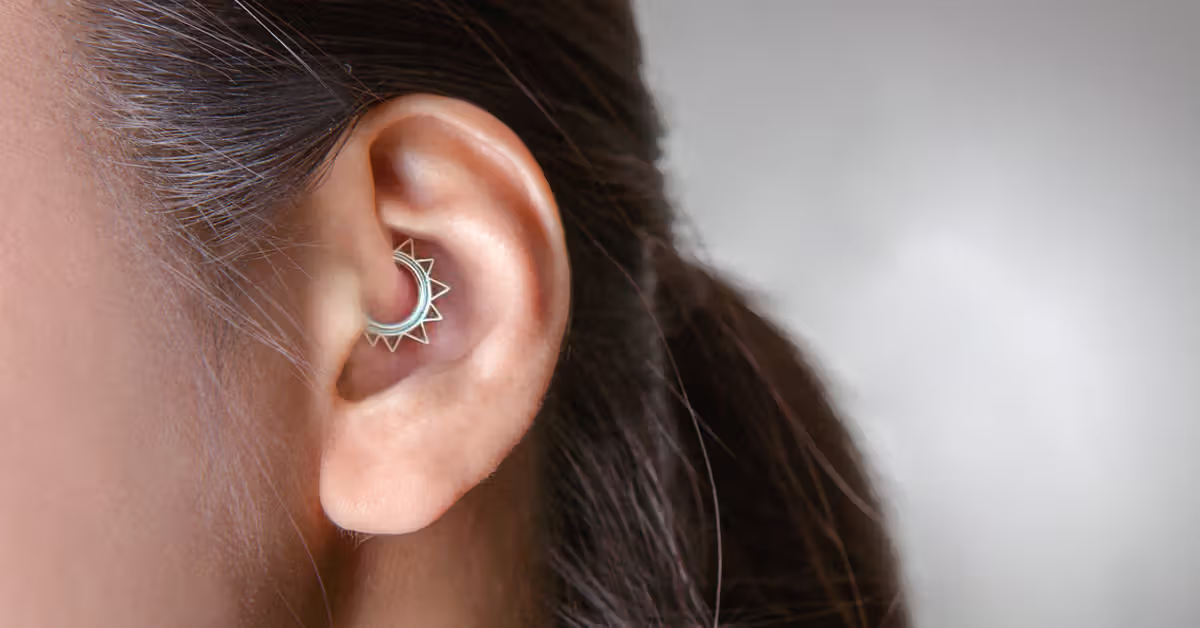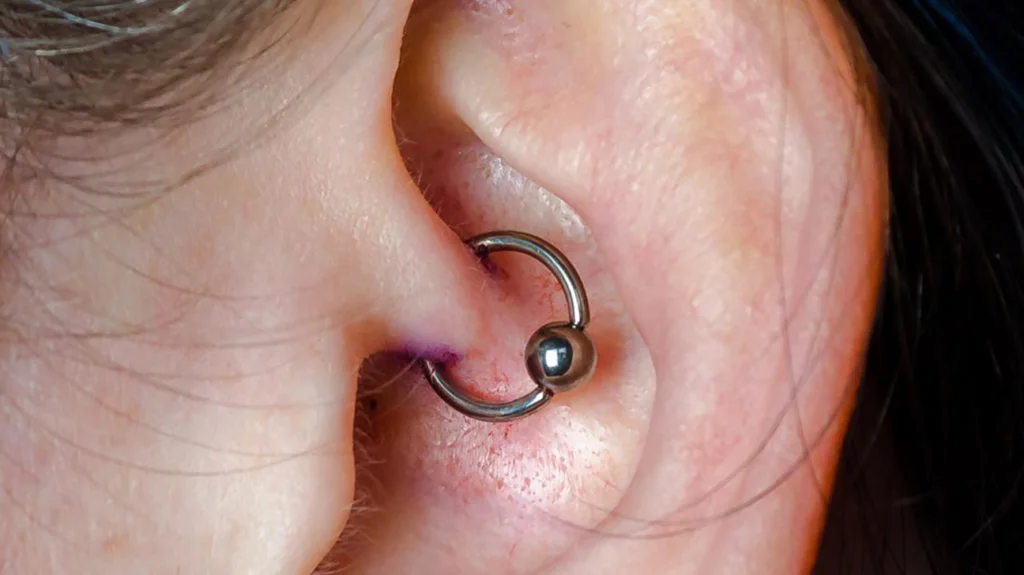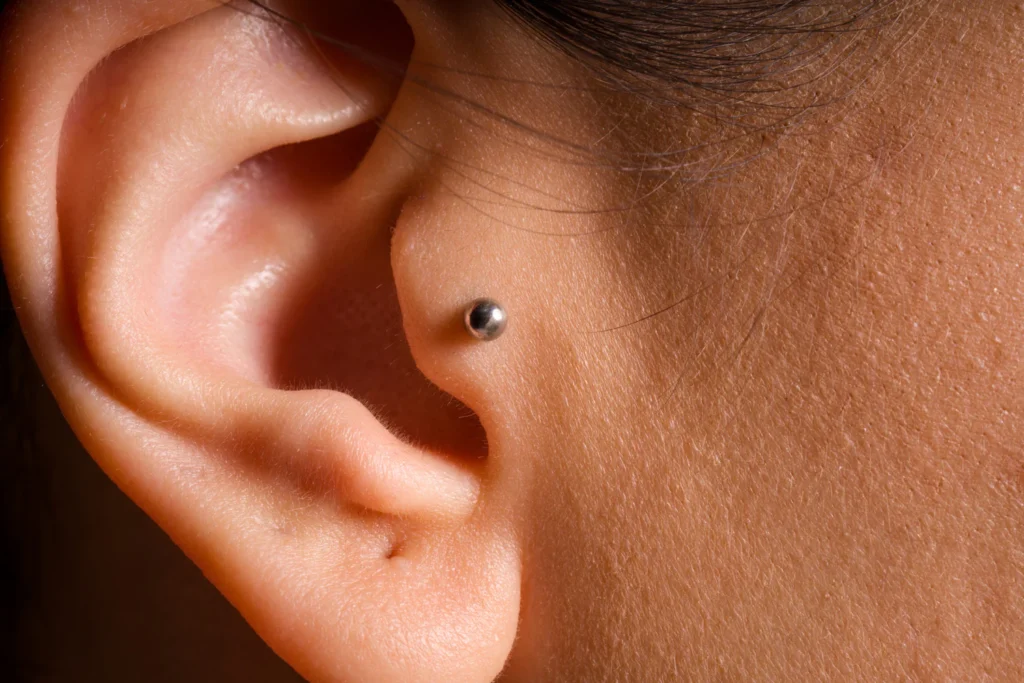
23 Apr Piercing for Migraine Headaches – Alternative Migraine Therapy: Piercing Method!
Migraines can be debilitating, affecting your ability to focus, work, and enjoy life. While medications and lifestyle changes help many, some people are now turning to an alternative remedy that’s creating buzz: ear piercing for migraine relief. Specifically, the daith piercing — a small hoop placed through the innermost fold of the ear — is believed by some to reduce the frequency and intensity of migraines.
But how effective is this trend really? Let’s explore the science, benefits, and risks behind piercing for migraine headaches.
What Is a Daith Piercing?
The daith piercing targets the cartilage fold just above the ear canal. It gained popularity when some migraine sufferers reported experiencing fewer and less severe headaches after getting it. While it looks like a stylish accessory, the daith piercing is believed to activate pressure points similar to acupuncture, a well-known holistic headache treatment.
Can a Daith Piercing Help Migraines?
While there’s plenty of anecdotal evidence from migraine sufferers who swear by the daith piercing, scientific research is still limited. Some believe it works by stimulating a vagal nerve branch, potentially calming the nervous system and reducing migraine symptoms. Others argue it could be a placebo effect.
Still, for those who haven’t found relief through traditional means, it may be worth considering — but always with professional medical advice first.
Pros and Cons of Piercing for Migraine Relief

Potential Benefits:
- May reduce the frequency or severity of migraines in some people
- A stylish, semi-permanent form of potential relief
- Less invasive than some medical treatments
Possible Drawbacks:
- No guarantee it will work for everyone
- Pain and risk of infection during healing
- Can take weeks or months to fully heal
- Not scientifically proven as a migraine cure
Aftercare and Healing Tips
If you decide to try a daith piercing for migraines, make sure to:
- Choose a licensed professional piercer
- Clean the piercing twice daily with saline solution
- Avoid touching or twisting the jewelry
- Allow 6–12 months for complete healing
Proper care is crucial to avoid infections or complications.
Exploring the Link Between Daith Piercings and Migraines
The growing popularity of daith piercings for migraine relief has sparked interest among both sufferers and practitioners. Though scientific evidence remains limited, many users claim a noticeable drop in migraine frequency and severity after getting the piercing, prompting further exploration into its effectiveness.
How Piercings Might Affect Migraine Pathways

One theory suggests that piercing pressure points, similar to acupuncture, may stimulate nerve endings connected to migraine pathways. By targeting specific areas of the ear, the daith piercing may influence the vagus nerve — which is associated with pain regulation and stress response.
Real Experiences from Migraine Sufferers
Countless testimonials online reflect a broad spectrum of results, with some experiencing dramatic relief and others noticing no change. While personal stories shouldn’t replace medical advice, they offer valuable insight into why so many are turning to alternative treatments like daith piercings.
Things to Consider Before Getting a Daith Piercing
Before opting for a piercing as a potential migraine solution, it’s important to weigh the pros and cons. Think about your overall health, pain tolerance, and willingness to follow aftercare procedures. Consulting with both a licensed piercer and your doctor ensures a safer experience and sets realistic expectations.
FAQs:
1. What is the best piercing for migraine relief?
The daith piercing is the most commonly associated with migraine relief, although results vary by individual.
2. How long does it take for a daith piercing to work on migraines?
Some people report relief within days, while others may not notice a difference at all. There’s no guaranteed timeline.
3. Is there scientific proof that daith piercings help with migraines?
There’s limited scientific evidence; most support comes from personal experiences and anecdotal reports.
4. What are the risks of getting a piercing for migraines?
Risks include infection, pain, swelling, and scarring — especially if aftercare isn’t followed properly.
5. Should I consult a doctor before getting a daith piercing for migraines?
Yes, always speak with a healthcare professional to rule out other treatment options and determine if it’s safe for you.
Conclusion:
While piercing for migraine headaches, particularly the daith piercing, has gained attention as a trendy alternative remedy, its effectiveness varies from person to person. If traditional treatments haven’t helped, and you’re open to trying holistic or unconventional methods, this piercing might be worth exploring — with proper research, realistic expectations, and guidance from a medical professional.

No Comments